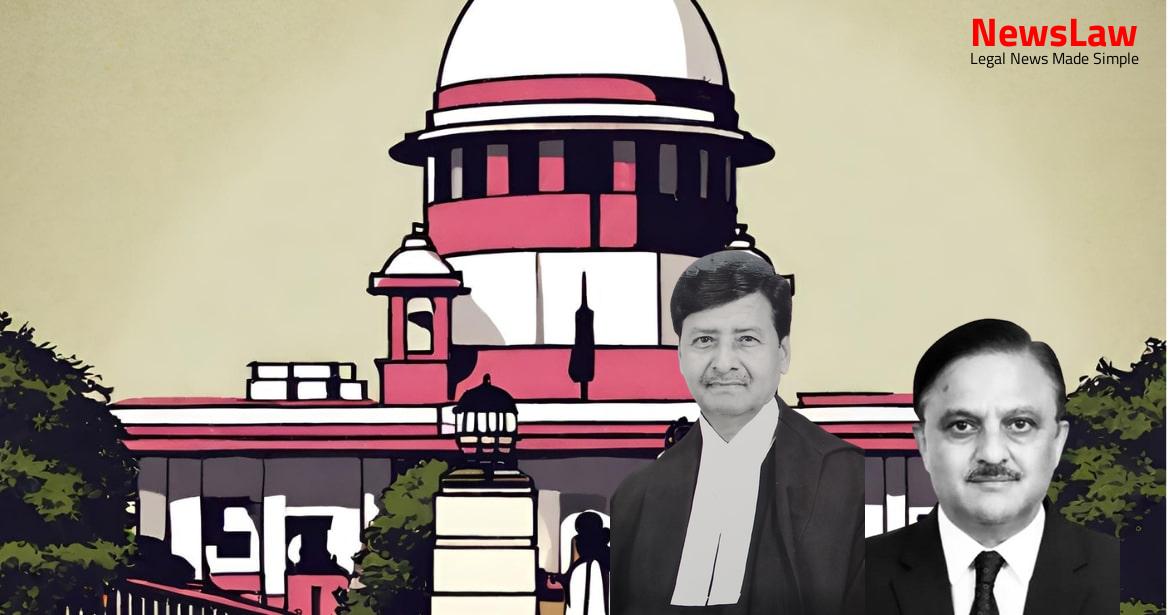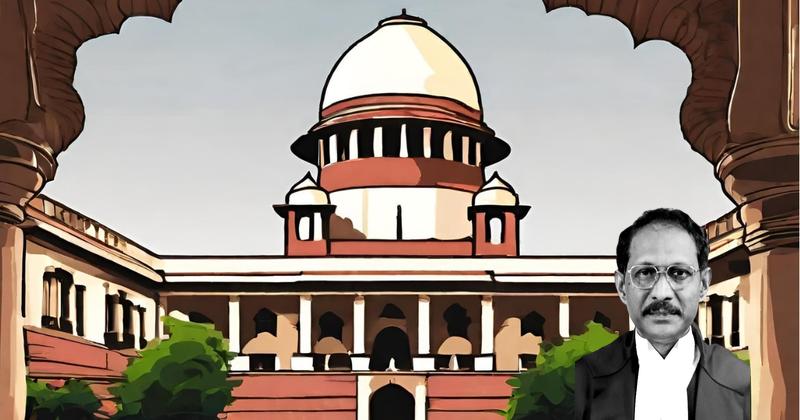The recent legal case surrounding a tariff dispute delves into the intricate legal analysis conducted by the courts. The case revolves around excess payments made based on deemed Generation Incentive and the implications of government notifications on the contractual agreements in place. Through a detailed examination of statutory provisions and regulatory guidelines, the courts provide insights into the complexities of determining tariffs and resolving disputes related to incentives and payments. Let’s explore the nuances of this legal analysis and its implications in the realm of electricity generation and tariff regulations.
Facts
- The Central Government issued notifications regarding controlling norms, terms, and conditions for determining tariff for sale of electricity
- Incentives for units using naphtha were included in the conditions specified
- An amendment notification dated 06.11.1995 was issued by the Central Government post the signing of the Power Purchase Agreement
- The amendment notification affected the deemed Generation Incentive payable to generating companies using Naphtha as fuel
- A high-level committee was formed in February 2005 to address excess payouts made based on deemed generation incentive
- Gujarat Urja entered into a power purchase agreement with CLP excluding any liability for the past period before December 1997.
- Interest on the agreed sum of ₹14.48 crores at 16% per annum was upheld to be payable on a bullet repayment method.
- The GERC and APTEL rejected CLP’s claim for interest on the deemed loan component prior to 2003.
- A supplementary agreement in 2003 substituted the original clause regarding the deemed loan component of ₹53.90 crores.
- The GERC rejected CLP’s claim on a plain reading of the clause in the supplementary agreement recognizing ₹53.9 crores as own capital with a cost of 14% passing through.
- The agreement provided for the treatment of own capital costs at 14% per annum for a defined period, with no amounts due after 31.03.2009.
Also Read: Legal Analysis of Claim for Loss of Profit in Delayed Contract
Arguments
- Gujarat Urja argues that the concurrent findings limiting the refund to a period up to 2002 are incorrect as CLP has been unjustly enriched.
- The GERC found that, based on the tariff order of 1992 as amended in 1995, the incentive could not be paid as originally contemplated in the PPA of 1994, making the amounts paid in excess. Hence, CLP was obligated to refund the entire excess amount from the point it was not entitled to it.
- The amounts not in conformity with the amendment had to be refunded totally.
- On the limitation issue, the APTEL erred in not following court precedents in considering the matter not time-barred.
- CLP was aware of decisions by the Central Electricity Authority and the Central Government on the issue.
- The amendment to the 1995 notification meant CLP could not legitimately claim further tariff based on the old incentive policy.
- CLP’s plant is gas-based and not Naphtha-based.
- The PPA with CLP specifies the plant as gas-based.
- Clause 6.5 of the PPA regarding change of law is clarificatory.
- Gas-based units like CLP are not covered by Note(2) as they use Naphtha only as an alternative fuel.
- The interpretation of Naphtha-based station by GERC and APTEL is disputed.
- Financial difficulties resulting from the amendment notification should be compensated in favor of CLP.
- The notification dated 06.11.1995 applies only to 100% Naphtha-based stations.
- The term ‘Naphtha-based station’ refers to the plant’s physical characteristics, not the fuel used.
- The amending notification makes a distinction between gas-based and Naphtha-based stations.
- Clause 6.5 in the PPA covers amendment to the notification dated 30.03.1992.
- Note(2) of the amended notification applies only to Naphtha-based stations.
- The amendment notification of 06.11.1995 has a prospective effect and would not apply to pre-existing PPAs with a date before its enactment.
- The authorities erred in interpreting the terms of the PPA, the 30.03.1992 notification, and the amendment of 06.11.1995.
Also Read: Public Declaration Requirement in Marriage under Hindu Marriage Act
Analysis
- Section 43A of the Electricity (Supply) Act, 1948 outlines the terms, conditions, and tariff for the sale of electricity by Generating Companies.
- The tariff for sale of electricity by a Generating Company to the Board is determined according to specified norms and factors set by the Authority and the Central Government.
- The findings regarding the payments to CLP from 1998 to 2005 being in excess of what was payable by Gujarat Urja are consistent between GERC and APTEL.
- Interest on loan capital for Generating Companies is calculated based on outstanding loans and the repayment schedule approved by the Authority.
- CERC Tariff Regulations in 2001 and 2004 provide guidelines on interest on loan capital and debt-equity ratios for determining tariffs.
- Incentives and variable charges for excess energy generation above the normative level of 68.5% are outlined in Clause 7.4 of the CERC Tariff Regulations.
- The Appellate Tribunal determined that the capital infused by participating Governments is considered equity capital eligible for return on equity as per the 2004 Tariff Regulation.
- The Appellate Tribunal clarified that the return on equity is subject to the tariff Regulation of 2004 and is set at a rate permitted by the regulation.
- The Tribunal found that the DVC Act does not recognize capital as borrowings, and repayment of such capital to participating Governments is not specified.
- The Tribunal also noted that the debt equity ratio was to be calculated as directed by the Appellate Tribunal, with returns on equity and interest on the loan component being the forms of recovery under the Regulations.
- The Appellate Tribunal highlighted that the interest on capital contributed by participating Governments must be made good with loans at an average interest rate, based on a 50:50 normative debt capital ratio.
- It was observed that any deficit in capital would be compensated by taking loans on behalf of participating Governments, and the excess equity over the 50:50 normative debt ratio would be considered as interest-bearing debt.
- The Tribunal emphasized that the tariff determination is based on the debt equity ratio finalised by the Appellate Tribunal, with returns on equity set according to the ratio.
- The judgment reiterated that the rights and obligations under the Power Purchase Agreement are subject to statutory provisions and government notifications related to tariffs and payments.
- The Appellate Tribunal also mentioned that the interest on deemed equity and debt components was calculated according to the regulations and legal requirements.
- The analysis acknowledged the binding nature of statutory notifications and government regulations in determining tariff calculations and payments.
- Parties agreed to recognize Rs.53.90 crores as ‘Own Capital’ for cost allowance
- Amendment to the existing PPA included recognizing ‘Cost of Own Capital’ at 14% per annum
- Reference to notification dated 30.03.1992 in the PPA for tariff calculation
- Amendment by notification dated 06.11.1995 regarding backing down for Naptha based plants
- Clause on Change in Law in the PPA regarding post-signing legal changes
- Interpretation of ‘Naptha-based unit’ in relation to the CLP gas-based unit
- Validity of parties agreeing to terms under Section 43A for electricity generation
- Power of Electricity Board under Section 43 and 43-A to enter into agreements for electricity sale
- Clarification on determination of tariff for electricity sale under statutory provisions
- Contractual agreement does not automatically make it a statutory contract
- Handling normative deemed loan and debt-equity ratios in relation to tariff regimes
- PPAs are considered statutory only in terms related to tariff determination and statutory requirements under Section 43A(2)
- No claim could have been made on any other legal or equitable considerations
- The settled sum of ₹53.90 crores was fictionally treated as a loan for interest purposes
- Equity infused in excess of tariff regulations negates the claim for interest
- Absence of interest for prior period precludes any further claim for interest
- Interest was part of the equity component and per se not payable
- Interest could be paid as per tariff notification or agreement terms
Also Read: OCI Cardholders’ Rights and Retroactive Notifications
Decision
- Lower authorities’ findings are deemed sound and reasonable.
- Both appeals are dismissed.
- No order on costs.
Case Title: CLP INDIA PVT LTD Vs. GUJARAT URJA VIKAS NIGAM LTD. (2020 INSC 383)
Case Number: C.A. No.-002793-002793 / 2010



